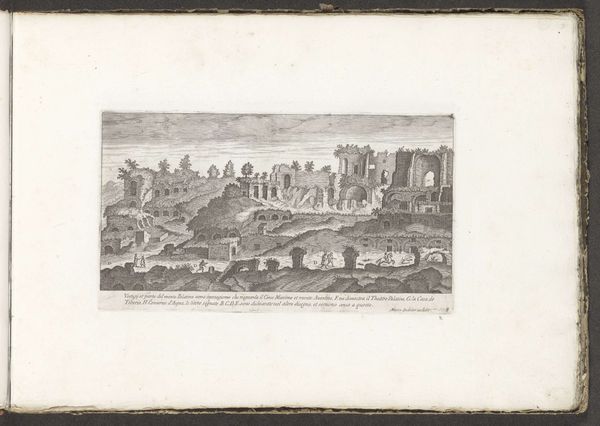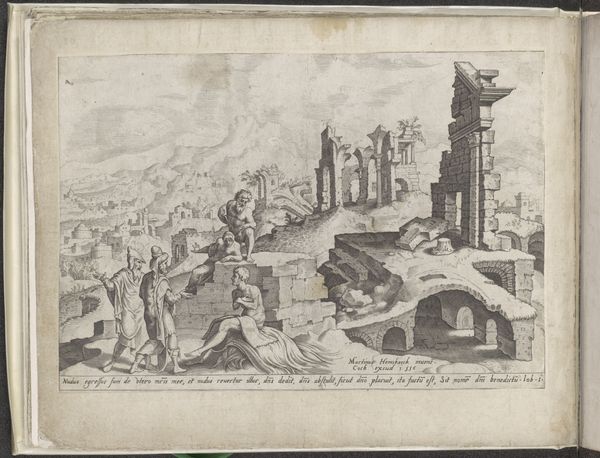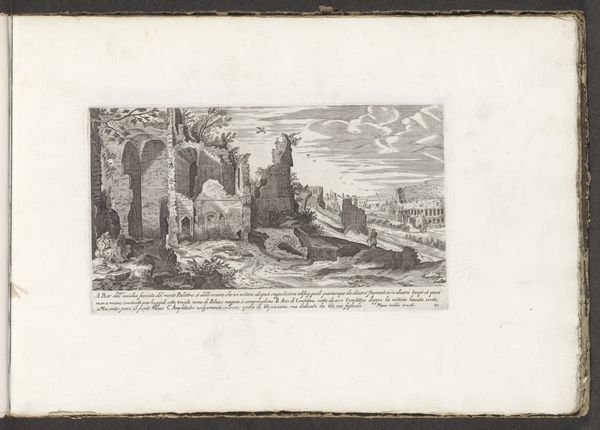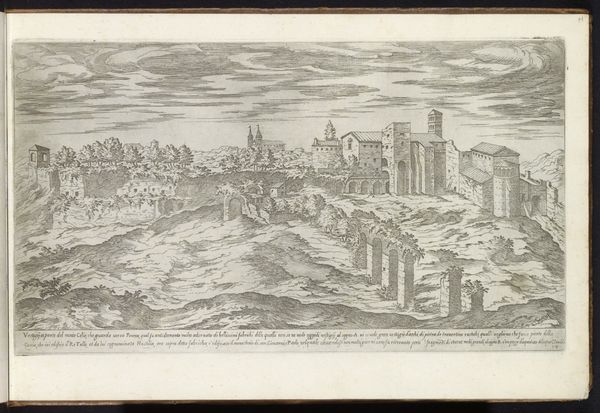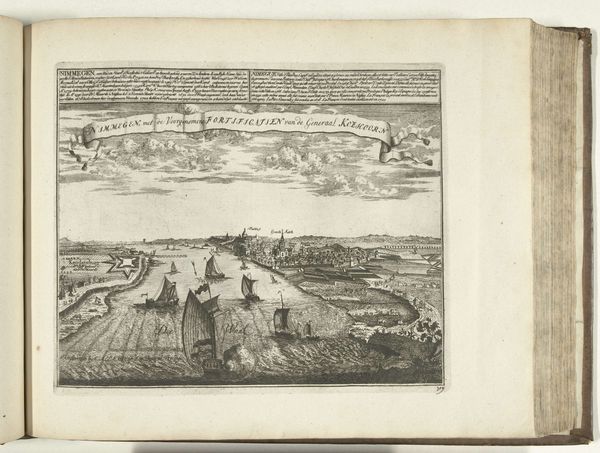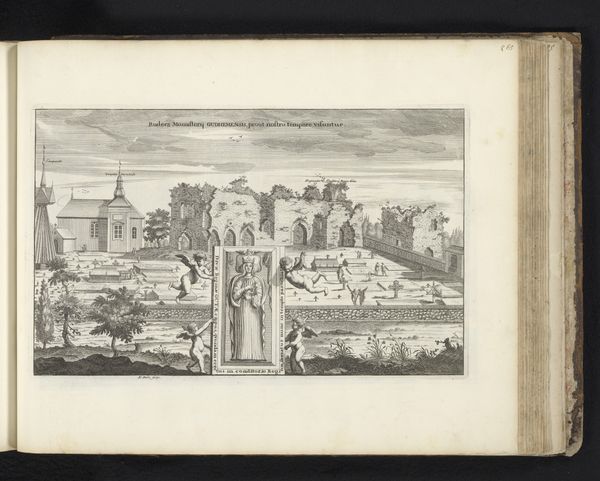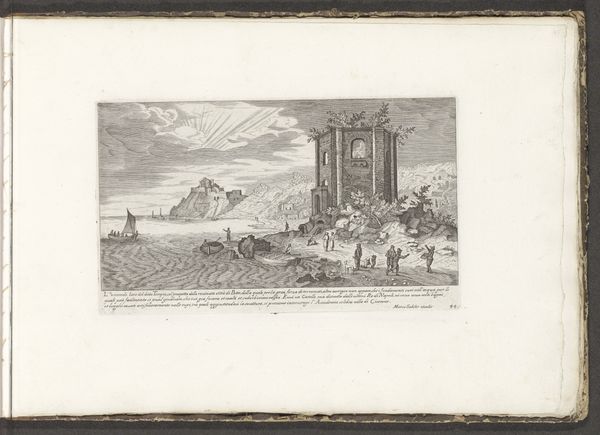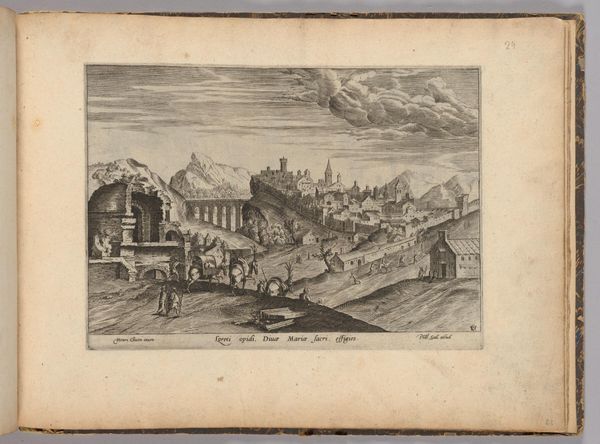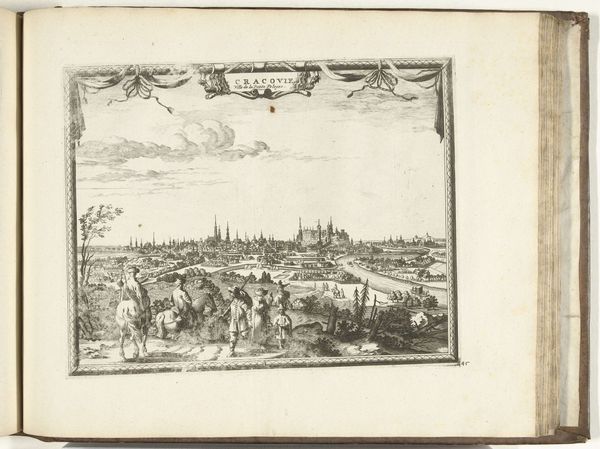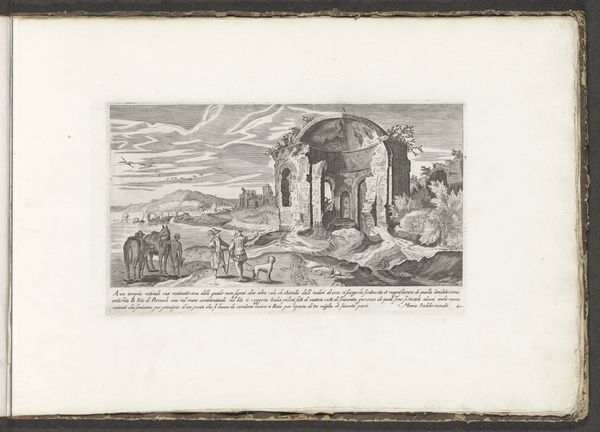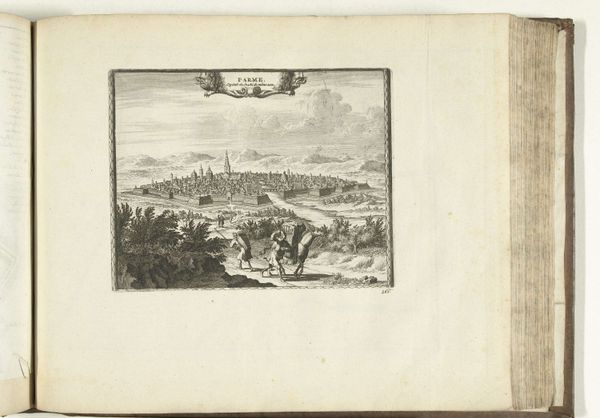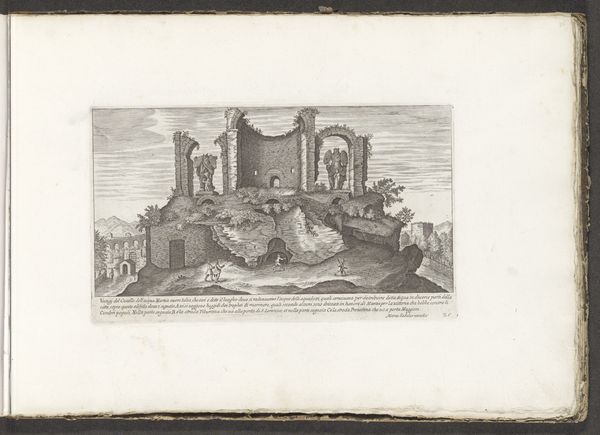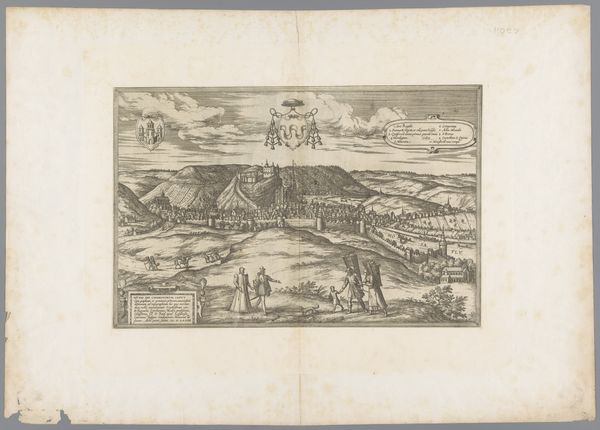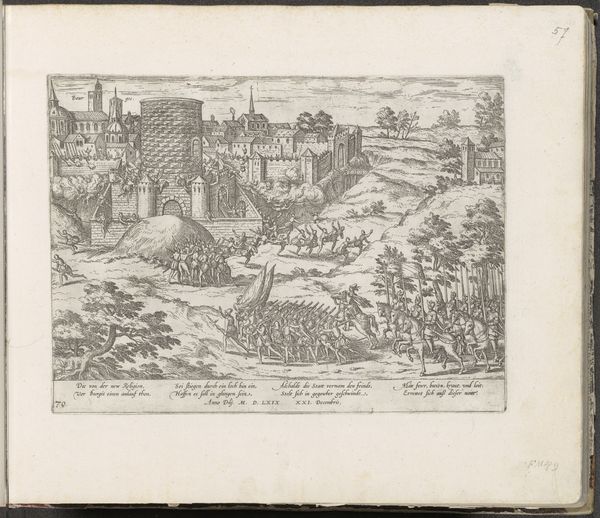
print, engraving
#
baroque
# print
#
landscape
#
line
#
cityscape
#
engraving
#
realism
Dimensions: height 223 mm, width 344 mm
Copyright: Rijks Museum: Open Domain
Curator: I see a haunting panorama, something out of a dream where memories crumble, but there is something peaceful in seeing it laid bare in black and white. Editor: Here we have a print from 1686 by Herman Padtbrugge, entitled "Gezicht op de ruïnes van Sigtuna"—or, "View of the ruins of Sigtuna." Curator: Ruins always strike me with that twinge of melancholy. This once important site reduced to remnants, it provokes thoughts about transience and mortality, and history itself! The precision of the line work somehow adds to that effect, everything sharply rendered, but irrevocably broken. Editor: Absolutely. Sigtuna, you see, was one of Sweden’s earliest towns. By the time this image was made it had gone into decline, of course. Padtbrugge gives us a glimpse into its decayed glory. We have the broken arches of great buildings, what appear to be portions of a church, set against the serene water and the soft curve of distant hills. Curator: The cityscape whispers of past grandeur. Do you notice the figures included? They seem rather indifferent to it. It really strikes home, that even mighty empires fade and day to day life continues unaffected. The image balances precision with almost ethereal delicacy, and what an incredibly evocative combination! Editor: It's fascinating how he employs the sharp detail, typical of Baroque engravings, to depict something inherently incomplete, even lost. Those tiny figures, like little witnesses or perhaps scavengers, draw us into that very sense of human continuity despite the decay around them. Even the ornate coat-of-arms hovers like a memory just out of reach. Curator: There is this striking contrast between permanence and transience: the lasting quality of the engraved line and paper used to display the ravages of time. Even the coat-of-arms seems to say, "This was, but it is no more". It feels a bit like a visual memento mori, in that sense. Editor: Precisely! I suppose this image is a fine example of how visual records carry more than just the information they provide. Curator: Well said, capturing something quite fundamental to the human condition. A thoughtful exploration, for those who visit it and for us now!
Comments
No comments
Be the first to comment and join the conversation on the ultimate creative platform.
